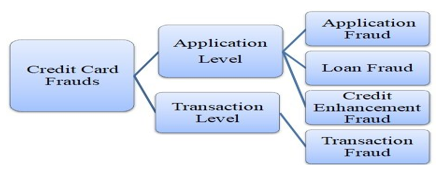A Novel Machine learning Algorithms used to Detect Credit Card Fraud Transactions
Main Article Content
Abstract
During the Covid-19 pandemic, the world was under lockdown, and everyone was inside their home. There are so many restrictions for going out, so many companies introduced online shopping, and this online shopping helped more people; the e-commerce platform also increased their revenue; at the same time, online fraud has also risen worldwide. Everyone adopted online shopping during the pandemic. In 2019 India's 2019 credit/debit card fraud rate was 365, according to the National Crime Record Bureau. The developed countries are the highest rate of credit card fraud in 2020 compared to India; for that reason, we have to implement mechanisms that can detect credit theft. The machine learning algorithm with the R program will play an essential role in credit card fraud detection. The following machine learning algorithm will have used for credit card fraud, Random Forest, Logistic regression, Decision trees, and Gradient Boosting Classifiers. The European bank dataset used in our research and the dataset size is 284808. Here we used two classes, the first one is called the positive class (fraud transactions), and the second one is the negative class (genuine transactions). The final result will show us the outperforms of our proposed system.
Article Details
References
Iwasokun GB, Omomule TG, Akinyede RO. Encryption and tokenization-based system for credit card information security. Int J Cyber Sec Digital Forensics. 2018;7(3):283–93.
Pumsirirat, A. and Yan, L. (2018). Credit Card Fraud Detection using Deep Learning based on Auto-Encoder and Restricted Boltzmann Machine. International Journal of Advanced Computer Science and Applications, 9(1).
Thennakoon, Anuruddha, et al. Real-time credit card fraud detection using machine learning. In: 2019 9th international conference on cloud computing, data science & engineering (Confluence). IEEE; 2019.
Navanshu Khare, Saad Yunus Sait, Credit card fraud detection using machine learning models and collating machine learning models. Int J Pure Appl Math. 2018;118(20):825–38.
Varmedja D, Karanovic M, Sladojevic S, Arsenovic M, Anderla A. Credit card fraud detection-machine learning methods. In: 18th international symposium INFOTECH-JAHORINA (INFOTECH); 2019. p. 1-5.
S P, Maniraj & Saini, Aditya & Ahmed, Shadab & Sarkar, Swarna. (2019). Credit Card Fraud Detection using Machine Learning and Data Science. International Journal of Engineering Research and. 08. 10.17577/IJERTV8IS090031.
Khatri S, Arora A, Agrawal AP. Supervised machine learning algorithms for credit card fraud detection: a comparison. In: 10th international conference on cloud computing, data science & engineering (Confluence); 2020. p. 680-683.
S. Mittal and S. Tyagi, "Performance Evaluation of Machine Learning Algorithms for Credit Card Fraud Detection", 2019 9th International Conference on Cloud Computing, Data Science & Engineering (Confluence), 2019.
Seera M, Lim CP, Kumar A, Dhamotharan L, Tan KH. An intelligent payment card fraud detection system. Ann Oper Res 2021;1–23.
Kasongo SM, Sun Y. A deep long short-term memory based classifier for wireless intrusion detection system. ICT Express. 2020;6(2):98–103.
Abhishek L. Optical character recognition using ensemble of SVM, MLP and extra trees classifier. In: International conference for emerging technology (INCET) IEEE; 2020. p. 1–4.
Kasongo SM. An advanced intrusion detection system for IIoT based on GA and tree based algorithms. IEEE Access. 2021;9:113199–212.
Many ID, Sun Y. Improved heart disease prediction using particle swarm optimization based stacked sparse autoencoder. Electronics. 2021;10(19):2347.
Niklas Donges. (2021). A complete guide to the Random Forest algorithm. https://builtin.com/data-science/random-forest-algorithm
Priya, G. & Saradha, S. (2021). Fraud Detection and Prevention Using Machine Learning Algorithms: A Review. 564-568. 10.1109/ICEES51510.2021.9383631.
J. O. Awoyemi, A. O. Adetunmbi, and S. A. Oluwadare. (2017). "Credit card fraud detection using machine learning techniques: A comparative analysis," International Conference on Computing Networking and Informatics (ICCNI), 2017, pp. 1-9, Doi: 10.1109/ICCNI.2017.8123782.
Raynor de Best. U.S. Credit cards – statistic and fact. (2020). https://www.statista.com/topics/1118/credit-cards-in-the-united-states/
Kasongo SM, Sun Y. A deep long short-term memory based classifier for wireless intrusion detection system. ICT Express. 2020;6(2):98–103
Norton M, Uryasev S. Maximization of auc and buffered auc in binary classification. Math Program. 2019;174(1):575–612.
Mohari, Ankit & Dowerah, Joyeeta & Das, Kashyavee & Koucher, Faiyaz & Bora, Dibya & Bora. (2021). A COMPARATIVE STUDY ON CLASSIFICATION ALGORITHMS FOR CREDIT CARD FRAUD DETECTION.

